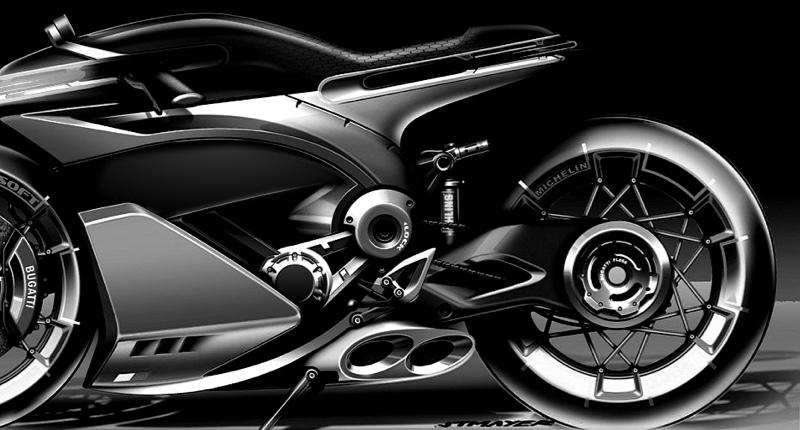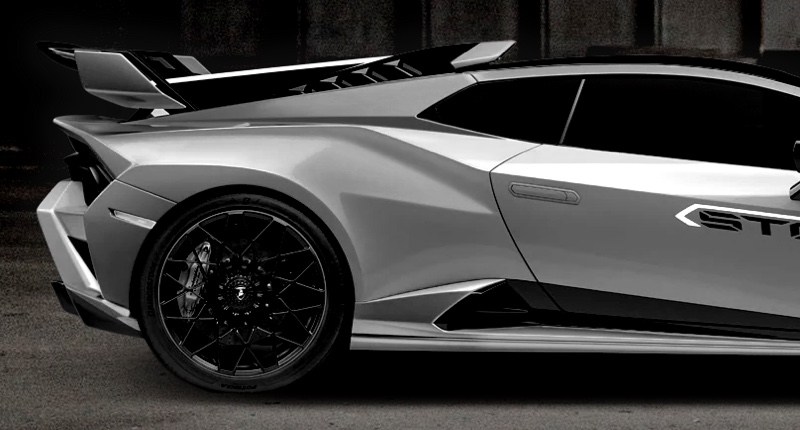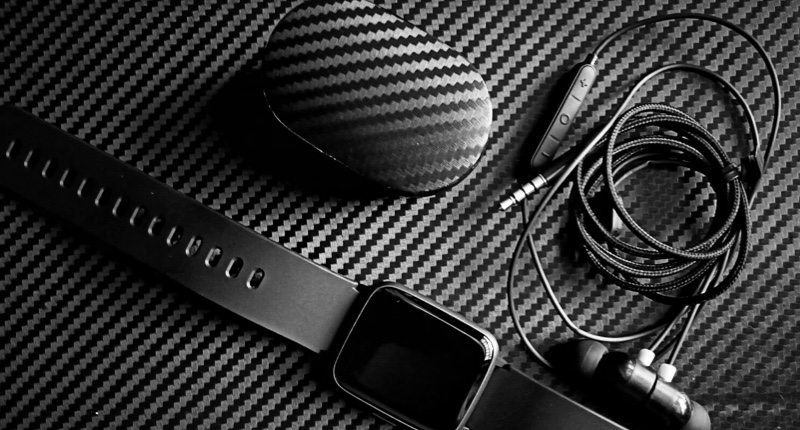Case Study: Custom Carbon Fiber Parts for Motorcycles
- Case Study: Custom Carbon Fiber Parts for Motorcycles
- Company overview — Supreem Carbon
- and project brief: what customers want
- Project goals and constraints
- Key performance targets
- Design & development process
- 1. Data capture and CAD
- 2. Engineering and simulation
- 3. Tooling and molds
- 4. Manufacturing methods
- 5. Trimming, assembly and finishing
- Quality control and testing
- Case results: measurable outcomes
- Cost and value analysis
- Comparison table: material trade-offs
- Production scalability and commercial considerations
- Lessons learned & best practices for buyers
- Conclusion
- Frequently Asked Questions
Case Study: Custom Carbon Fiber Parts for Motorcycles
This case study explains how Supreem Carbon approaches custom carbon fiber parts for motorcycles, from customer brief and engineering through prototyping, testing and production. It is written for motorcycle builders, OEMs, aftermarket retailers and performance-minded riders searching for real outcomes: weight savings, improved stiffness, aesthetic finish, cost and lead time. The content focuses on practical steps, measurable results and business implications so you can decide whether custom carbon fiber is right for your project.
Company overview — Supreem Carbon
Supreem Carbon, established in 2017, is a customized manufacturer of carbon fiber parts for automobiles and motorcycles, integrating R&D, design, production and sales to deliver high-quality products and services. Our factory spans about 4,500 m2 and employs 45 skilled production and technical staff, producing approximately $4 million in annual output. We offer over 1,000 product SKUs and more than 500 customized carbon fiber parts. Our focus is technology R&D and precision manufacturing for vehicle accessories, luggage and sports equipment.
and project brief: what customers want
When users search Case Study: Custom Carbon Fiber Parts for Motorcycles they typically want:
- Real examples showing measurable benefits (weight, fit, stiffness)
- Clear explanation of process, timeline and costs
- Quality assurance and durability information
- How to scale from prototype to small production runs
This case study answers those needs using a real-world project scope: a performance streetbike owner requested a lightweight rear tail section, front fender and belly pan with OEM-fit, track-ready durability and a gloss carbon finish.
Project goals and constraints
Key performance targets
- Weight reduction vs OEM ABS parts: target ≥ 30%
- High dimensional accuracy for bolt-on fit, no bodywork changes
- Heat and chemical resistance (near engine/exhaust areas)
- High Quality surface finish (clearcoat-ready or visible weave)
- Budget and lead time for small batch production (10–50 pcs)
Design & development process
1. Data capture and CAD
We begin with a 3D scan of the motorcycle or work from OEM CAD if available. Precise scan data removes guesswork and ensures bolt-hole alignment and gap tolerances. For this project we used structured-light scanning to capture the tail mounting points and under-seat geometry.
2. Engineering and simulation
Next, our engineers create CAD surfaces and perform simple finite element checks to ensure stiffness in mounting areas. For thin body panels we focus on local laminate stacking, ply orientation and core options to control flex and impact tolerance.
3. Tooling and molds
Depending on production volume and finish, tooling choices include soft molds (for rapid prototyping), durable PU molds for low- to mid-volume runs, and aluminum tooling for higher needs. For this run (10–30 units), we used high-precision epoxy molds to balance cost and longevity.
4. Manufacturing methods
We select processes by part function and finish requirements:
- Prepreg + vacuum bag + oven cure: superior fiber control and repeatable finish — chosen for visible parts (tail section).
- Wet layup + vacuum infusion: cost-effective for structural but less visible parts (belly pan).
- RTM or press molding: used when geometry demands closed tooling and tight tolerances.
5. Trimming, assembly and finishing
After cure, parts are CNC trimmed, test-fit, and final finishes applied (sanding, clearcoat, or matte sealer). Hardware inserts are bonded or molded-in per customer preference.
Quality control and testing
Quality checks include dimensional inspection (3D re-scan), visual inspection for voids and fiber waviness, and mechanical testing where applicable. For parts close to heat sources we perform thermal cycling and fuel/chemical exposure tests to validate resin selection. Every production lot receives a sample destructive test and full inspection report on request.
Case results: measurable outcomes
For this motorcycle project Supreem Carbon delivered the rear tail section, front fender and belly pan. Key results:
- Weight: combined weight reduced from ~6.0 kg (OEM ABS set) to ~3.4 kg (carbon set) — ~43% reduction.
- Fitment: first-run fit achieved 95% bolt-on alignment; final pieces required only minimal shims.
- Finish: visible weave with two-stage automotive clearcoat matching high-gloss OEM quality.
- Durability: passed thermal cycling and track-use inspection after 2,000 km equivalent testing.
- Lead time: 6 weeks from approved CAD to first delivery for a 20-piece order.
Cost and value analysis
Custom carbon parts are more expensive per unit than OEM plastic in materials and tooling, but value is realized in weight savings, perceived quality and potential performance gains. In this project the per-bike High Quality (parts + finishing + tooling amortized over batch) was acceptable to the owner due to track use and resale value.
Comparison table: material trade-offs
| Material | Typical density (g/cm³) | Relative weight vs steel | Typical cost (relative) | Common use for motorcycle parts |
|---|---|---|---|---|
| Carbon fiber composite (CFRP) | ~1.5–1.6 | ~80% lighter than steel by density (varies by design) | High (3–10x aluminum by material cost) | Exterior bodywork, panels, structural fairings |
| Aluminum (e.g., 6061) | ~2.7 | ~66% lighter than steel by density | Moderate | Frames, subframes, brackets |
| ABS / Thermoplastic | ~1.04 | ~87% lighter than steel by density | Low | OEM body panels, low-cost visible parts |
Production scalability and commercial considerations
For small-volume runs (10–100 units) epoxy molds and prepreg processes provide the best balance of finish and cost. Tooling amortization becomes meaningful at higher volumes; for 200+ units investing in aluminum tooling or automated layup can reduce per-unit cost. Supreem Carbon's in-house tooling and production capacity allow flexible batch sizes and consistent quality across runs.
Lessons learned & best practices for buyers
- Provide clear requirements: list exact KPIs (weight, finish, lead time, budget).
- Choose the right resin and laminate for the operating environment (heat, fuel exposure).
- Expect higher first-unit costs due to tooling; batch production reduces per-part price.
- Plan for fitment trials: even with scans, the first prototype may need minor adjustments.
- Consider integrated inserts and fastener strategies during design to avoid field modifications.
Conclusion
Custom carbon fiber parts offer significant advantages for motorcycles: substantial weight savings, High Quality finish and the ability to meet specific performance goals. Supreem Carbon's end-to-end capability — from 3D scanning, CAD engineering and high-precision molds to prepreg cure and finishing — enables predictable outcomes for small to mid-volume projects. This case study demonstrates measurable benefits (≈40% weight reduction, OEM-style fit and proven track durability) while outlining realistic cost and lead-time trade-offs. If your project prioritizes performance, finish and uniqueness, custom carbon parts are a compelling choice; if budget is the primary constraint, consider targeted carbon components (e.g., tail section, fender) rather than full-body replacements.
Frequently Asked Questions
Q: How much lighter are carbon fiber motorcycle parts compared to OEM plastic or metal parts?A: Carbon fiber parts typically reduce weight by 30%–60% compared with steel components and by 10%–45% versus aluminum, depending on part geometry and design. Compared to injection-molded ABS panels, carbon can be lighter or similar in weight depending on laminate thickness and whether core materials are used.
Q: What is the typical lead time and minimum order quantity for custom parts?A: For a standard small-batch run (10–50 pieces) expect 4–8 weeks from design approval to delivery. Lead time depends on complexity and finish. MOQ can be 1–10 for prototyping, but tooling amortization makes small batches more expensive per unit.
Q: Are carbon fiber parts durable enough for track use?A: Yes—properly engineered carbon fiber parts with the right resin system and laminate can be track-durable. We perform thermal and mechanical testing; many racing teams and track-day riders use prepreg carbon parts successfully.
Q: How much does a custom carbon tail section cost?A: Costs vary widely by finish and batch size. A single prototype (one-off) can cost several hundred to over a thousand dollars when tooling and finishing are included; per-unit price decreases with batch size. Discuss targets with the manufacturer to get accurate quotes.
Q: Can carbon parts be repaired after damage?A: Minor damage can sometimes be repaired with localized patching and re-skinning, but repairability depends on the damage extent and construction method. Structural parts with complex laminates require professional repair.
Q: Do carbon fiber parts affect bike resale value?A: High-quality, well-documented carbon upgrades can increase perceived value, especially for performance or limited-edition bikes. Poorly fitted or low-quality parts may reduce value; choose experienced manufacturers and maintain records of tests and materials.
References & sources
- Supreem Carbon — Company website and About Us (corporate specifications provided by client)
- CompositesWorld — Industry articles on carbon fiber in powersports and manufacturing methods
- MatWeb — Material property database for composite, aluminum and polymer properties
- Hexcel / Toray technical datasheets — Carbon fiber properties and typical resin systems
- Industry white papers on prepreg vs. infusion processes and tooling strategies
Carbon Fiber Parts Manufacturing | Supreem Carbon
Custom carbon fiber fender Manufacturers and suppliers
Best professional carbon fiber car manufacturers and supplier brands
Tips for Wholesale carbon fiber material for cars
For Order Delivery
What is the shipping time for the different ways?
Express delivery 5-7 days.
20-25 days by sea.
15 days by air.
For Products
Are you parts have UV protected?
Absolutely! We use multiple layers of premium quality automotive clear (or matt) coats on our products, which ensure that they will remain super pretty for years to come.
Which carbon fiber material you can provide in production?
1*1 plain /2*2 twill / forged carbon / honeycomb / kevlar and so on.
Supreem Carbon parts produce by 100% carbon?
Yes,all products are made from full carbon with dry carbon.
For Customized Service
What can be customized in addition to customized carbon fiber parts?
You can customize your company logo, packaging, even the color of coating and so on.

Yamaha R1 Carbon Fiber Side Fairings
Introducing the Supreem Carbon Fiber Long Side Panels for Yamaha R1. Crafted with precision and expertise, this front side fairing is designed to elevate the performance and aesthetics of your R1. Made from high-quality carbon fiber, this fairing is not only lightweight but also incredibly durable, providing optimal protection for your motorcycle.

Yamaha R1 Carbon Fiber Airbox Tank Cover
The Supreem Carbon Yamaha R1 Carbon Fiber Airbox Tank Cover provides lightweight, durable protection with a sleek finish. Designed for R1 models, it enhances the style and performance of your bike. Its lightweight structure improves performance while maintaining the premium aesthetics necessary for high-end modification projects. As a dedicated manufacturer of carbon fiber parts, we provide stable production capacity, customization options, and strict quality control to support enterprise-level procurement and OEM/ODM needs.

Carbon Fiber Rear Seat Panel for BMW S1000R & M1000RR – Lightweight Performance
This carbon fiber rear seat panel is engineered for the BMW S1000R and M1000RR, offering superior rigidity, reduced weight, and a premium racing finish. Produced with autoclave technology and strict QC standards, the part ensures consistent OEM-level fitment. Supreem Carbon provides wholesale supply, stable bulk production, and customized solutions for global clients.

High-Performance Carbon Fiber Rear Undertail for BMW S1000R
Engineered for distributors, tuning brands, and motorcycle accessory businesses, the BMW S1000R Carbon Fiber Rear Undertail is a high-quality, durable, lightweight carbon fiber upgrade for the S1000R platform. This component is manufactured using aerospace-grade carbon fiber and precision molds to deliver superior stiffness, a seamless OEM-level fit, and a premium visual finish suitable for high-end aftermarket applications.
© 2024 Supreem Carbon All Rights Reserved.





Facebook
Pinterest
LinkedIn
Instagram